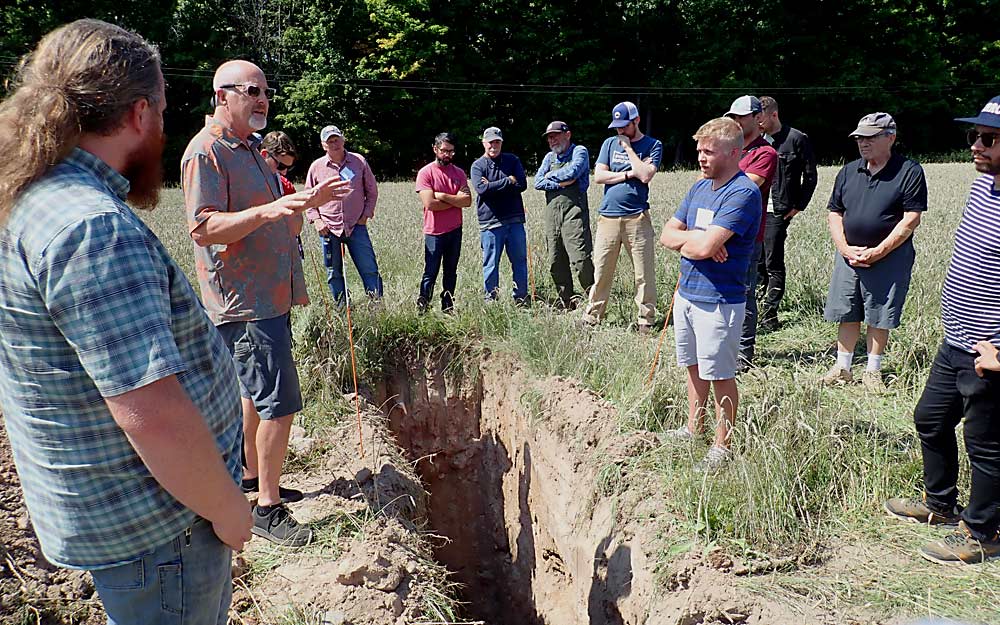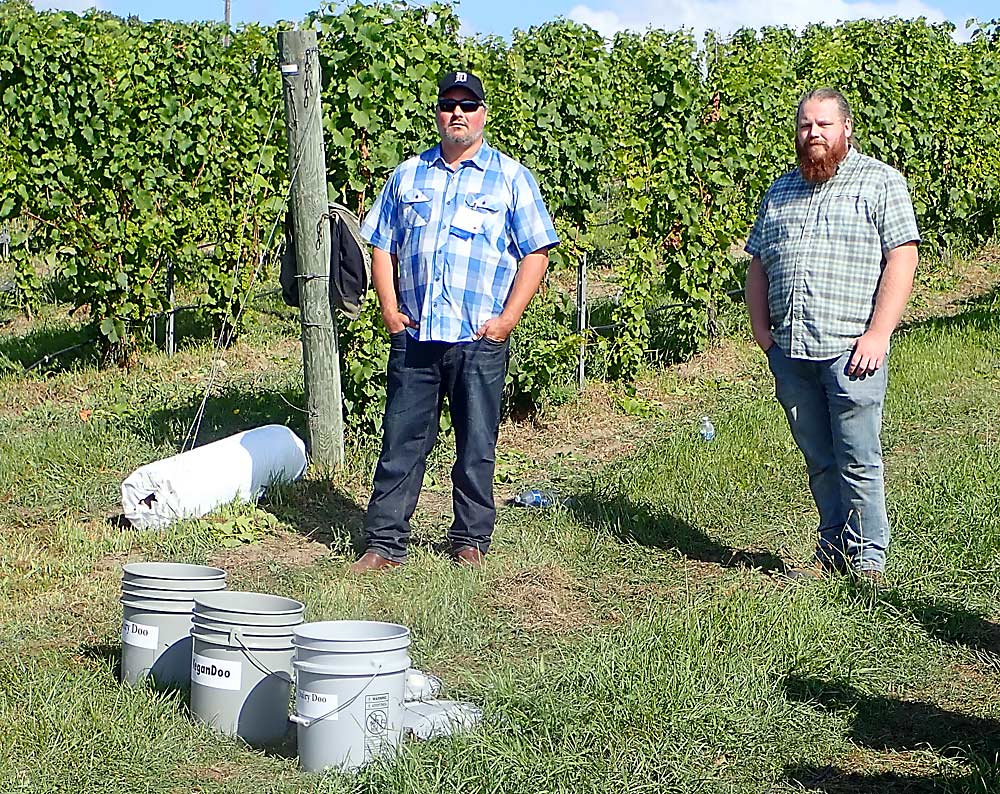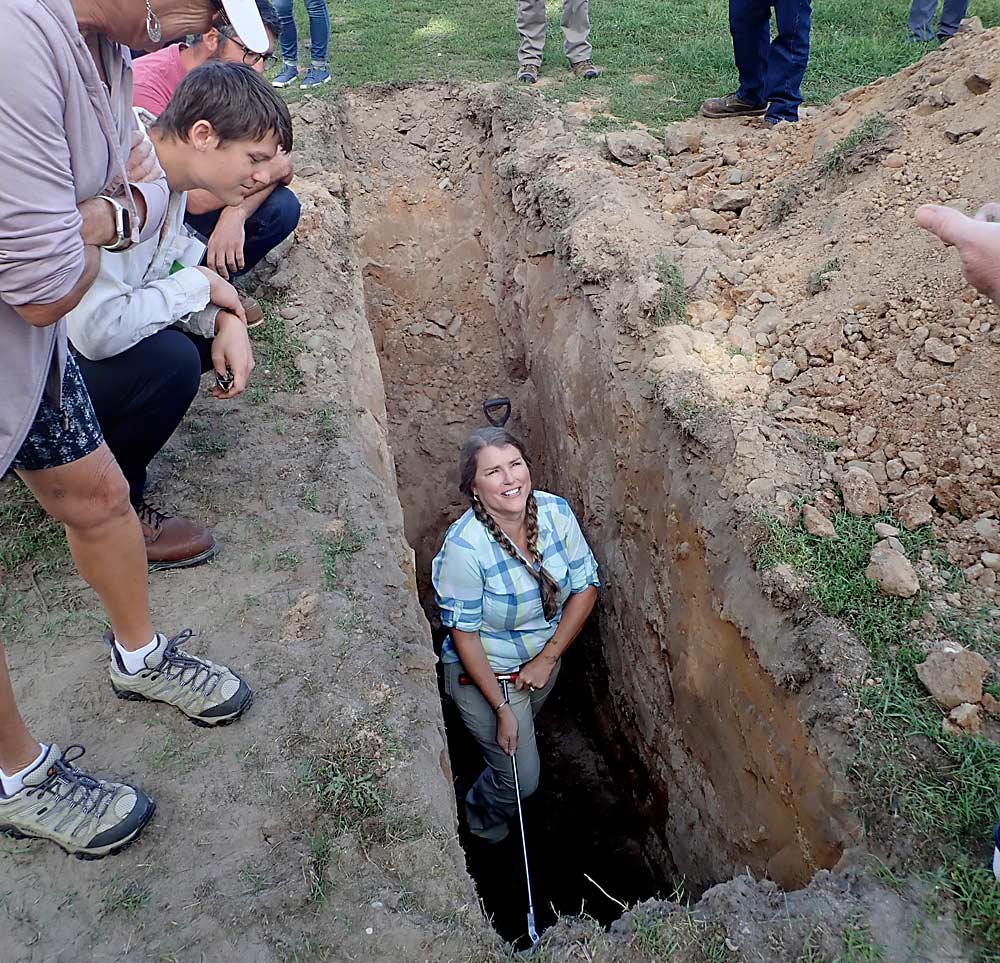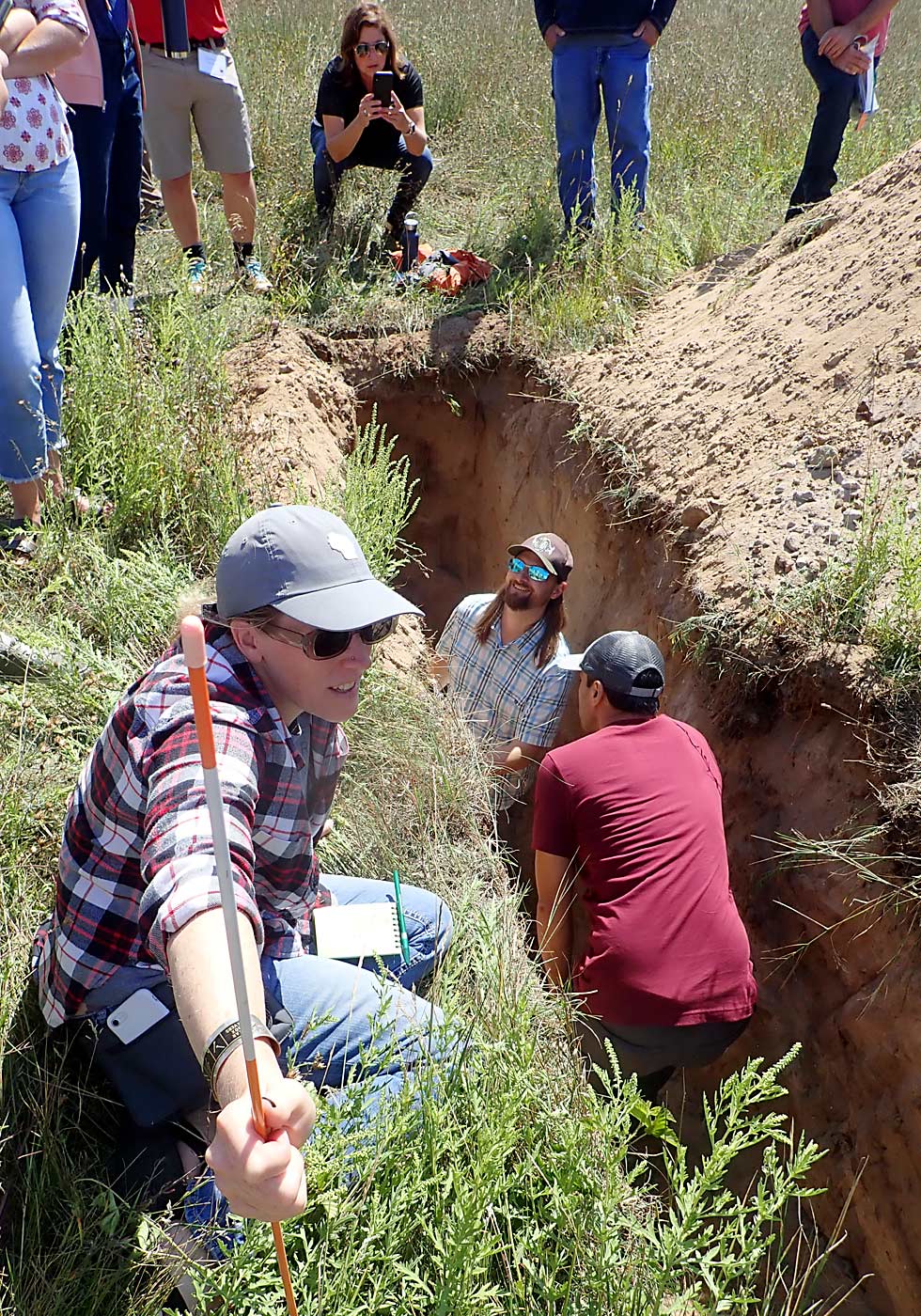
Vineyard soil took center stage at the Traverse City conference titled “Dirt to Glass: Elevating Michigan Wine from the Ground Up.” Hosted by Michigan State University Extension in August, the conference included a day in the field examining the below-ground environment, discussions of healthy vineyard soils and practical tips for building those soils.
Conference co-organizer and MSU viticulture professor Paolo Sabbatini hoped growers left the conference with a better understanding of soil’s impact on vineyard performance and wine quality, he said, and the importance of “soil management and carbon sequestration for the creation of a more sustainable grape and wine industry.”
Speakers included a range of experts, including vineyard soil researcher Kevin Pogue, professor and department chair of structural geology at Whitman College in Walla Walla, Washington; Michigan agronomy and soil health specialist Christie Lee Apple; and Bruno Basso, MSU professor of earth and environmental sciences.

Start with data
Throughout the conference, Pogue urged growers to get as much information as possible about their vineyard before deciding which vine to grow where.
“Do you already have a specific cultivar in mind, or do you want to find a cultivar that matches the site? Whatever you do, you should be trying to match the variety to the site,” he said. That may seem obvious, but he often sees growers trying to force plant varieties to grow and produce in unsuitable sites. “And they fight year in and year out,” he said.
Soil conditions are paramount in pairing cultivars to site, Pogue said. To get a handle on general soil conditions, he recommended starting with geologic and soil map surveys, topographic maps and digital elevation models. For a clear picture of what is going on underfoot, however, the best options are on-site soil pits and soil analyses, which detail such information as bedrock depth, composition and variability; soil texture and composition; presence and amount of organic matter; and water-holding capacity, he said.

Make better decisions
Once growers have that baseline data, they can begin to make better decisions about whether to spread fertilizers and where to put them, utilize other soil amendments, add cover crops and decide which meet their needs, or take other actions to improve their soil health.
One option recently gaining attention is reducing tillage in vineyard rows, according to Basso. Part of the regenerative agriculture approach, the no-till method maintains soil aggregates, which keeps carbon in the soil, reduces water evaporation, makes the ground less susceptible to drought conditions and helps protect against erosion.
No-till also allows growers to try cover crops that have deep roots, Apple said. This allows water to move more deeply into the soil, and it not only helps vineyards survive droughts but also encourages a larger number and diversity of microbes, as well as earthworms. Earthworms, she noted, infiltrate and aerate soil, improve soil structure and enhance water movement and nutrient cycling. Beyond the soil benefits, steps toward more sustainable farming are also potential marketing tools.
“Think of it as a holistic land-management practice,” she said. “That can be part of your story as you pour for people in your tasting room.”

Keep it up
Regardless of which soil-improvement path growers take, they should do follow-up soil and other analyses to ensure they are getting the results they want, Apple said. For instance, a grower might add cover crops to improve soil nutrition, but rather than assuming they can reduce commercial fertilizer applications, they should take a tissue or sap analysis to make sure they aren’t short-changing their vines.
Growers should also consider the wealth of drone and other technologies now available to pinpoint problem areas in the vineyard, so they can consider moving from uniform fertilizer applications toward time- and money-saving spot applications, Basso said. When combined with no-till, “this could help in reducing greenhouse gas emissions, sequestering carbon, building biodiversity and improving both soil health and farmer well-being,” he said.
Healthy soil is an integral part of a healthy and productive vineyard, Apple reiterated. “We need to provide nutrients and a stable situation for our plants to thrive,” she said. “Soil structure is the gatekeeper and microbes are the worker bees, so why don’t we start managing our workforce and treating them correctly? The changes in your practices are really opportunities for you.”
by Leslie Mertz






Michigan trenching and shoring laws must be different than Washington??